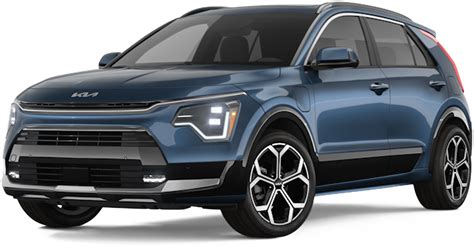Unlock Savings: Everything You Need to Know About Plug-In Hybrid Rebates
As the world shifts toward sustainable energy solutions, plug-in hybrid vehicles (PHEVs) have emerged as a popular choice for eco-conscious consumers. Combining the benefits of electric and traditional gasoline vehicles, PHEVs offer an innovative solution for reducing emissions while providing the convenience of conventional cars. One of the most appealing aspects of PHEVs is the potential for significant savings through various available rebates. This article delves into everything you need to know about plug-in hybrid rebates, helping you unlock potential savings while contributing to a more sustainable future.
What are Plug-In Hybrid Vehicles?
Plug-in hybrid vehicles are cars that utilize both an electric motor and a gasoline engine. They can operate on electric power alone for a certain distance (usually between 20 to 50 miles) before switching to gasoline. This dual capability allows drivers to experience the benefits of electric driving while maintaining the convenience of traditional refueling when needed. As such, PHEVs are an excellent option for urban commuters who primarily drive short distances but still take longer trips occasionally.
Understanding Plug-In Hybrid Rebates
Plug-in hybrid rebates are financial incentives offered by federal, state, and local governments to encourage the adoption of environmentally friendly vehicles. These rebates can significantly lower the purchase price of a PHEV, making it more financially accessible for consumers. Various factors influence these rebates, including your location, the vehicle’s specifications, and the programs currently available.
Types of Rebates Available
1. Federal Tax Credit
The federal government offers a tax credit that can range from $2,500 to $7,500, depending on the battery capacity of the PHEV. To qualify for this credit, the vehicle must meet certain criteria, including being a new purchase and having a battery with a capacity of at least 4 kWh. The tax credit amount can significantly reduce your overall tax bill if you meet the qualifications.
2. State Incentives
Many states offer additional rebates and incentives for PHEV buyers. These incentives can vary widely, with some states offering cash rebates, tax credits, or reduced registration fees. It’s essential to check with your state’s Department of Motor Vehicles or energy office for specific programs available to you.
3. Utility Company Rebates
Some utility companies provide rebates or special rates for customers who own PHEVs. These incentives might include discounted charging rates, cash rebates for purchasing a PHEV, or rebates for the installation of a home charging station. Contacting your local utility provider can reveal potential savings opportunities.
4. Local Programs and Incentives
Some local governments and organizations have their rebates and incentives for environmentally friendly vehicles. These might include grants, low-interest loans, or additional tax incentives. Researching local options will give you a comprehensive understanding of potential savings when purchasing a PHEV.
How to Qualify for Plug-In Hybrid Rebates
Qualifying for plug-in hybrid rebates typically involves a few steps:
- Purchase a Qualifying Vehicle: Ensure that the PHEV you choose meets federal, state, and local criteria for rebate eligibility.
- Complete Required Documentation: Keep track of all necessary documentation, including the purchase agreement, vehicle specifications, and any paperwork required for claiming rebates.
- File for Rebates or Credits: Submit your applications, following the guidelines provided by the government agencies or organizations offering the rebates. For tax credits, you may need to fill out specific forms when filing taxes.
- Check Deadlines: Many rebates have specific application deadlines, so it’s crucial to stay informed about these timelines to ensure you don’t miss out on potential savings.
Benefits of Plug-In Hybrid Vehicles
Besides the financial incentives, plug-in hybrid vehicles offer numerous benefits:
- Reduced Emissions: PHEVs produce lower emissions than traditional gasoline-powered vehicles, contributing to improved air quality.
- Fuel Savings: By operating on electric power for short distances, PHEV owners can significantly reduce their fuel costs.
- Incentives for Charging: Many charging stations are available, and some are free or offer discounted rates, making it easy and affordable to charge your vehicle.
- Performance: PHEVs provide a smooth, quiet driving experience with robust power from both the electric motor and gasoline engine.
Conclusion
Plug-in hybrids are a viable solution for those looking to embrace eco-friendly driving without sacrificing convenience. With various rebates and incentives available, consumers can significantly reduce their investment in these vehicles. Understanding the types of rebates available, how to qualify, and the benefits of owning a PHEV can empower you to make informed decisions while contributing to a greener planet. Whether you’re looking to save money, reduce your carbon footprint, or both, exploring plug-in hybrid options could be a wise choice for both your wallet and the environment.
FAQs
1. What is the average rebate amount for plug-in hybrids?
The average rebate amounts vary widely depending on federal, state, and local programs but generally range from a few hundred dollars to several thousand dollars based on factors such as battery capacity and location.
2. Can I receive rebates for used plug-in hybrids?
Typically, rebates are only available for new PHEV purchases. However, some programs may have exemptions or unique incentives for used vehicles, so it’s best to check local regulations.
3. How do I find local electric vehicle rebate programs?
You can find local rebate programs by visiting your state’s energy office website, your local utility company’s website, or resources such as the U.S. Department of Energy’s website that lists state-specific incentives.
4. Do rebates apply to all types of plug-in hybrid vehicles?
Not all PHEVs qualify for rebates. Each rebate program has specific criteria, including battery capacity and vehicle model, so it’s essential to do your research before making a purchase.
5. What should I do if I have issues with my rebate application?
If you experience issues with your rebate application, contact the issuing agency directly to resolve any problems and clarify what documentation or information is required.
Download Plug In Hybrid Rebate
